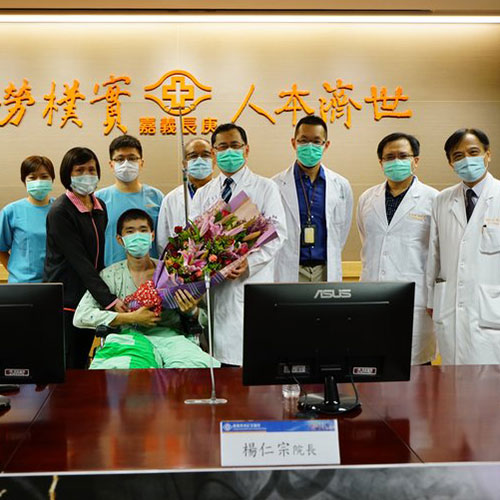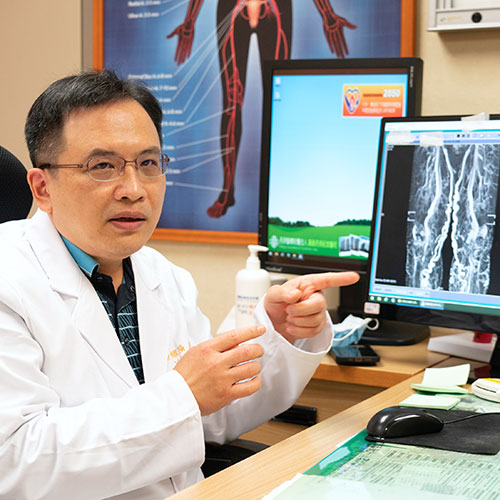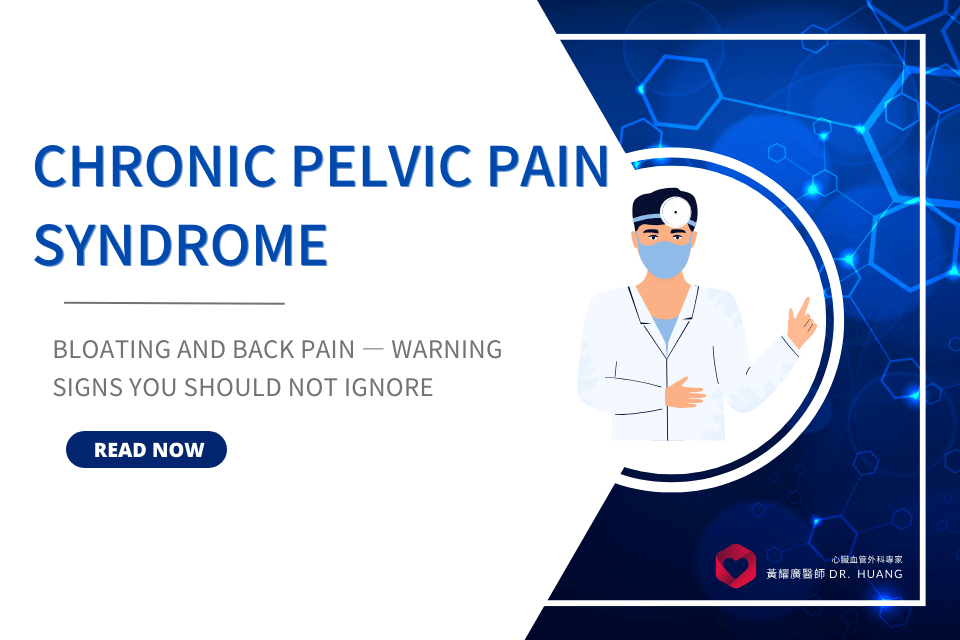Personalized Treatment Plans for Pelvic Pain
Thorough Assessment of Pelvic Congestion
Women with pelvic congestion syndrome often suffer from chronic pelvic pain, irregular periods, and painful urination or intercourse. The condition is often diagnosed by finding enlarged veins in the pelvis.
While diagnosis can be challenging, our comprehensive evaluation using non-toxic venous MRI can provide a clear picture of the pelvic veins and help us develop a personalized treatment plan.

Dr. Huang's Extensive Experience
- Chief of Cardiac Surgery at Chang Gung Memorial Hospital, Chiayi
- Subspecialty Director of Thoracic Surgery, Taiwan Society of Thoracic and Cardiovascular Surgery
- Subspecialty Director of Vascular Surgery, Taiwan Society of Vascular Surgery
OUR CASES
Are you Experiencing
Pelvic Congestion Syndrome?
Accurate diagnosis and effective treatment for pelvic congestion syndrome can be difficult. Many women have sought help from multiple healthcare providers without finding relief.
If you're experiencing these symptoms, it's important to consult with a specialist.
-
Unexplained chronic lower abdominal pain
-
Varicose veins of the vulva and posterolateral thigh
-
Pain during or after sex
-
Lower abdominal pain and restlessness after prolonged standing or sitting
-
Frequent urination, alternating diarrhea and constipation
-
Recurrent varicose veins after endovenous laser ablation
Unexplained chronic lower abdominal pain
Chronic lower abdominal pain (usually lasting more than six months), back pain, abnormal menstrual bleeding, pain with urination and sexual intercourse may be caused by pelvic venous congestion and varicosities.
Varicose veins of the vulva
and posterolateral thigh
Varicose veins around the vagina and vulva are common signs of a condition called pelvic congestion syndrome.
If you have varicose veins in unusual places like the outer and back parts of your thighs, it's important to get checked out.
To improve the appearance of these veins, you might need treatment for pelvic congestion.
Pain during or after sex
Patients experiencing persistent pain several hours after sexual activity should be highly suspicious of pelvic congestion syndrome and seek prompt treatment to improve quality of life.
Lower abdominal pain and restlessness
after prolonged standing or sitting
Standing or sitting for too long can make varicose veins worse by slowing down blood flow.
If you have pelvic congestion syndrome, treatment can help ease the constant pain in your lower belly and let you get back to your normal routine.
Frequent urination, alternating diarrhea
and constipation
Pelvic congestion can lead to compression of other pelvic organs due to the limited space.
This compression can manifest as irritable bowel syndrome, alternating constipation and diarrhea in the rectum, and urinary frequency in the bladder.
Recurrent varicose veins
after endovenous laser ablation
The pelvic veins are the hardest part of the body to get a clear picture of during a medical exam.
If you only treat varicose veins in your legs without checking the veins in your pelvis, there's a higher chance they'll come back.
So, to prevent your varicose veins from returning after surgery, it's best to get a special MRI scan called a non-contrast MR venography before surgery.
This scan can show all the veins in your pelvis and legs, helping your doctor plan the best treatment.
PELVIC CONGESTION
Objective Image With Leaks

FAQS About PCS
It can be hard to pinpoint the exact problem when you have pelvic congestion. Even with treatment, it may not be directly addressing the problem and your symptoms could come back.
Consulting the right physician is crucial to prevent this cycle.
What does the pain from pelvic congestion feel like?
It's usually a dull ache or a sore pain in the pelvic area, lower back, and sometimes it can feel like a sharp stab.
The pain often gets worse if you stand for a long time.
I experience lower abdominal pain accompanied by diarrhea and frequent urination. Could this be related to pelvic congestion syndrome?
Pelvic congestion syndrome can sometimes manifest as bladder sensitivity or even urinary incontinence.
Some patients also experience bowel disturbances such as abdominal pain, alternating between diarrhea and constipation, especially around their periods.
Which areas of varicose veins are more likely to indicate pelvic congestion syndrome?
Varicose veins in the vagina and vulva are classic signs of pelvic congestion syndrome.
Varicose veins on the outer and back sides of the thighs should also be considered, as they are not typically seen in superficial varicose veins.
How is pelvic congestion syndrome typically diagnosed in general hospitals?
General hospitals usually diagnose pelvic congestion syndrome using ultrasound, CT scans with contrast, and venography. However, these methods often have limitations and involve exposure to contrast agents and radiation.
Therefore, we utilize a proprietary non-contrast pelvic MRI for diagnosis.
What are the common treatments for pelvic congestion syndrome?
Common treatments for pelvic congestion syndrome include medications, venous stents, venous embolization, sclerotherapy, and minimally invasive venous interventions.
What are the potential consequences of seeking treatment for pelvic congestion syndrome at an inadequate hospital?
You might end up spending a significant amount of money on procedures like placing venous stents without fully understanding the treatment, or experiencing a recurrence of varicose veins shortly after the procedure.
Treatment Procedure for Pelvic Congestion
-
 1
1Consultation
Obtaining a detailed medical history and scheduling a venous ultrasound and chest X-ray.
-
 2
2Venous MRI
Should the patient's condition warrant further investigation, a self-pay venous MRI will be arranged.
-
 3
3Treatment Plan
A treatment plan will be devised once the venous status of the lower extremities is clear.
-
 4
4Start Treatment
Treatment options include medications, venous stents, venous embolization and other effective ways.
-
 5
5Post-surgery Follow-up
We will be using LINE for post-operative care and symptom management.
FEATURESTORY
靜脈曲張哪4種症狀就要就醫?一次瞭解精確診斷和微創治療
不過,當靜脈瓣膜退化鬆弛,阻擋血液回流的機制失靈,靜脈血淤積在表淺靜脈系統,就可能造成靜脈曲張。 黃耀廣醫師提到,臨床常見腳痛、血管破裂出血、...

 聯合報
聯合報
大學生車禍股動脈斷命危 嘉義長庚組跨醫療團隊搶命
上午院長楊仁宗、急診科蕭政廷副院長、心管外科黃耀廣醫師及麻醉科 ... 黃耀廣說,股動脈完全斷裂在創傷病人中不常見,但是發生會造成病人短時間大量...

 自由健康網
自由健康網
出現昏厥時,平均剩3年!治療主動脈瓣狹窄,心臟外科醫師圖解懶人包
黃耀廣醫師說,「部分患者是天生的,因為主動脈瓣膜的構造長得不太一樣,而在關閉時無法密合。」 如果主動脈瓣無法完全關閉,血液便會在心臟舒張的時候,...

驚!車禍骨折氣胸、左肺塌陷回台手術治療
經過家人朋友多天奔走,並由台灣醫師全程護送下,曾姓患者在急診時除了重新檢傷細查後,由嘉義長庚心胸血管外科黃耀廣醫師進行住院診治,並協助適當止痛,...

 自由健康網
自由健康網
85歲嬤主動脈瓣逆流 開心成功保命
嘉義長庚醫院心臟外科醫師黃耀廣說,一般的主動脈瓣逆流只須更換瓣膜,就可改善病患狀況,但依患者狀況,若直接更換瓣膜會造成主動脈爆裂而在手術過程...

 ETtoday健康雲
ETtoday健康雲
嘉義長庚微創手術品質優 有效治癒氣胸肺塌
不過,當靜脈瓣膜退化鬆弛,阻擋血液回流的機制失靈,靜脈血淤積在表淺靜脈系統,就可能造成靜脈曲張。 黃耀廣醫師提到,臨床常見腳痛、血管破裂出血、...

One Stop Service for Pelvic PainDiagnosis and Treatment
Professional Strengths
Reliable Surgical Quality
Our stable team of surgical experts provides comprehensive solutions for hemodialysis access issues.

Thorough Venous Assessment
A comprehensive venous study will be performed to assess the pelvic and lower extremity veins.
Led by Vascular Surgeons
Provide world-class vascular access services.
Harmless venous MRI
Non-toxic, patent-protected imaging for quantitative flow analysis.
Personalized Treatment Plan
By utilizing our patented, non-toxic venous MRI, a customized treatment plan can be established prior to surgery, minimizing the risk of errors.
LINE Consultations
Experience convenient online consultations, treatment scheduling, and post-operative follow-up through our LINE
MedicalUpdate
How long does it take to treat pelvic congestion syndrome
Treatment for PCS typically starts with medication. If vascular embolization is necessary, the procedure usually takes one to two hours, and hospitalization may be required for three to four days.





